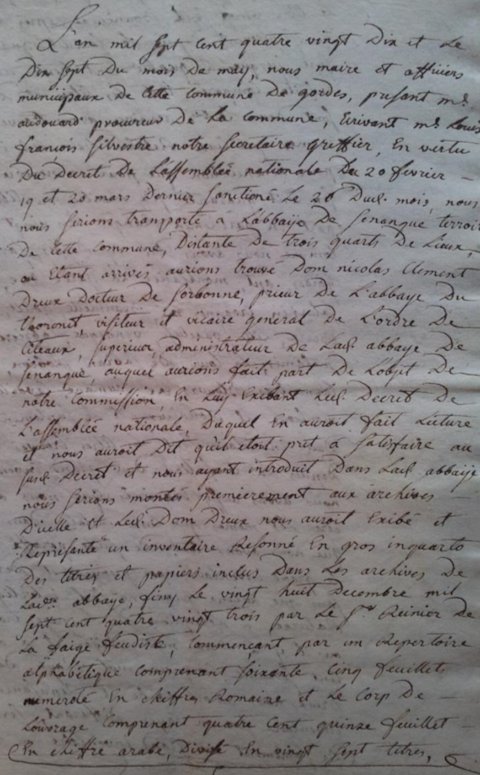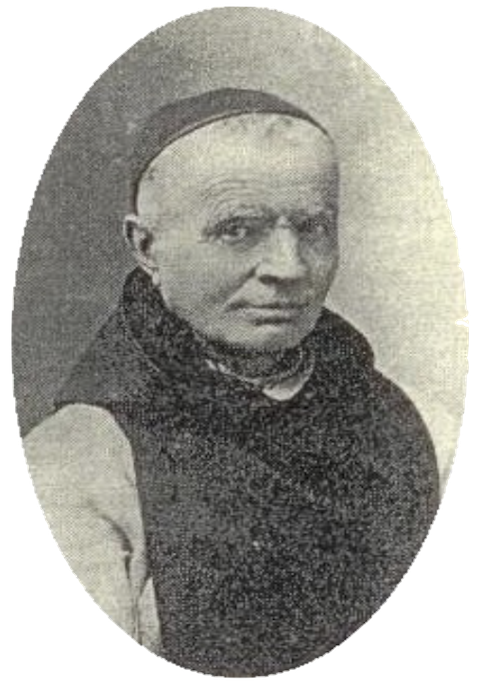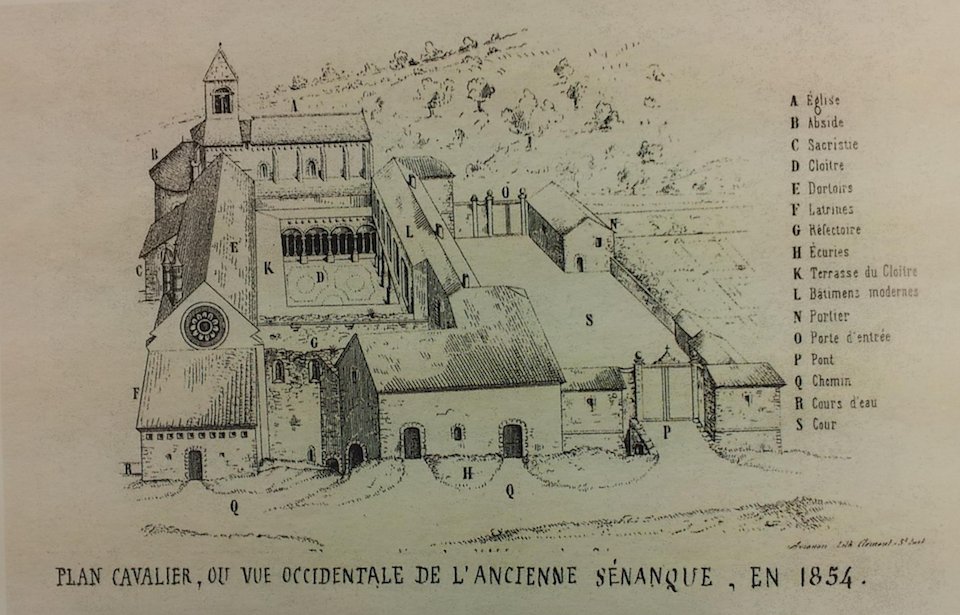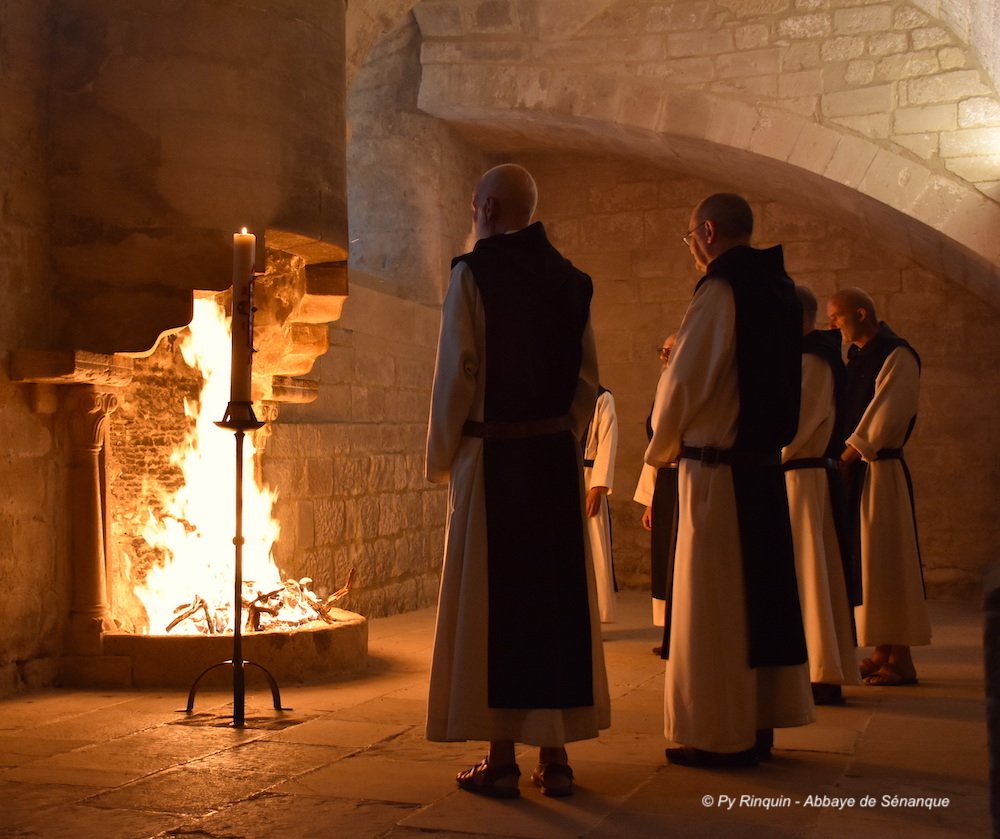The history of the Abbey
Fourth cistercians abbey founded in Provence, Notre-dame de Senanque abbey known four major steps during his history.
- The foundation
- The Golden Age
- The decline
- The revival
Discover through these periods, the various events that the Abbey has gone through to reach us as it appears to us today.
The foundation
The Abbey of Sénanque was founded on the 9th of the Calends of July 1148 (23rd June) by a dozen of Cistercians monks coming from the monastery of Mazan, located in Ardèche. Our-Lady of Sénanque was the fourth Cistercian abbey founded in Provence, after Le Thoronet, Aiguebelle and Silvacane.
The abbey belongs to a powerful monastic order, hold by the aura of Saint Bernard.
At the foundation of Senanque, the Cistercians count more than 350 monasteries all over Europe. Based on a solid organization, they develop a specific architectural style, immediately recognizable.
In Sénanque, the community took possession of a 1 kilometer long and 300 meters wide valley. Despite the narrowness of the location, it perfectly corresponded to the instructions of the Cistercian order which specify than monasteries cannot be built in towns, villages or rural houses (chapter 9 of the Summa Cartae Caritatis).
Saint Benedict asked for monasteries to possess all the necessary things to live: water, a mill, a garden, a bakery, etc. in order that monks do not need to go outside, which is not beneficial for their souls.
In 1220, the abbey was completed, a construction site of almost 60 years.
The valley of Senanque presents all the materials needed for the construction as stone and wood. It’s isolated, with cultivable lands, pastures and especially, a river: the Senancole.
During the XIIth century, the climate, fresh and rainy, was different than nowadays: the river Sénancole was sufficient for the needs of the founding monks. Witnesses of that ancient strength, some remains are still visible at several places of the valley.
The name of the abbey is probably linked to this river: coming from the latin words sana aqua (pure water). According to the Summa Cartae Caritatis, each new foundation has to count twelve monks and one abbot, in order to remind the Christ and the Apostles.
The construction of the Abbey ended in the 1220’s, after more or less 60 years of works.
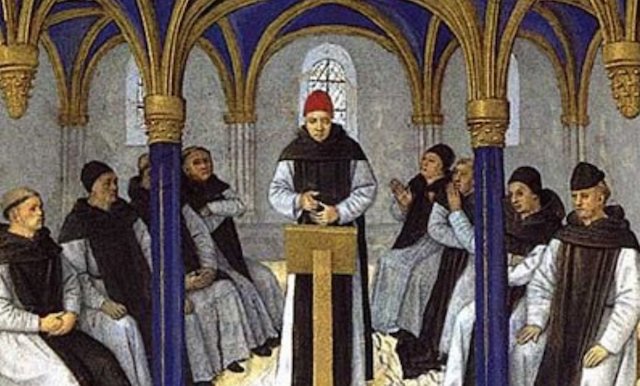

Crozier of the Abbey
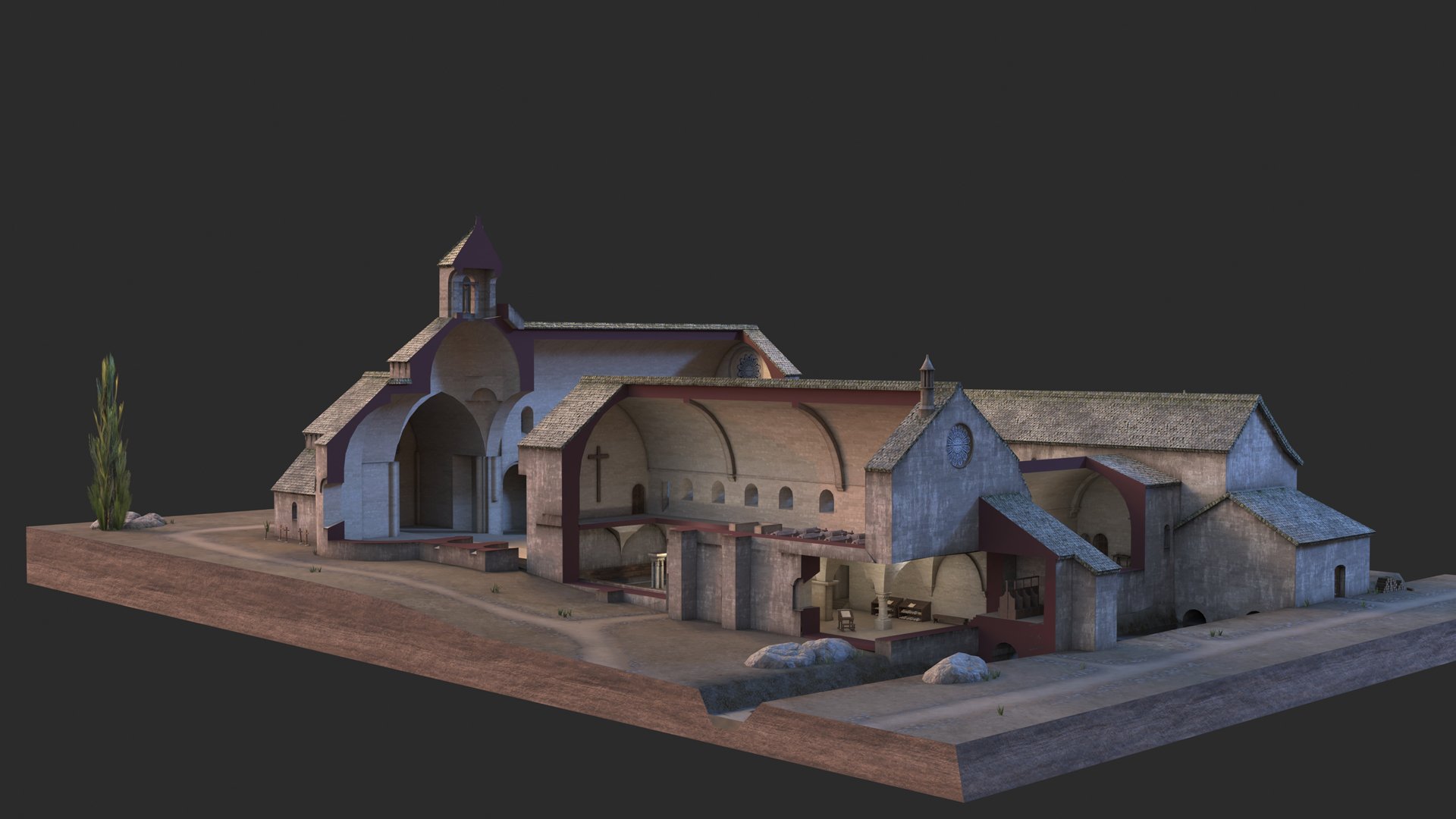
Stripped-down representation of the medieval abbey
The Golden age of the Abbey
Thanks to the numerous donations of the Agoult Simiane family from Gordes and of the lords of Venasque, the abbey prospered quickly. The presence into the church of the grave of Geoffroy of Venasque, a lord, seems to indicate that he was a great benefactor during the construction of the Abbey.
The possessions and the influence of the abbey grew during the XIIIth to lead to its climax during the XIVth century. At that moment the abbey owned four mills, seven granges, a hospital in Arles, several houses in l’Isle-sur-la-Sorgue, Cavaillon, Carpentras, Marseille, a farm in Maussane and a hospice in Pernes-les-Fontaines where one’s can find a road with the name of Sénanque., The flocks of the abbey could graze from the Mount Ventoux to Sisteron.
The decline
The situation of the Abbey started to deteriorate at the beginning of the XVth century. This was the beginning of a period of discord and violence and the properties of the abbey couldn’t be conserved, the incomes decreased and the vocations reduced. Only three brothers were still living in Sénanque in 1439.
Dom Berenger Borgarelli, the abbot in 1444, described a catastrophic situation: there were few vocations, the monastery was damaged and the incomes were at the lowest because of the wars which were devastated not only for Sénanque, but for all the area.
Presages of the French Wars of Religion, in 1544 an armed group of Waldensian from Cabrières rised up and attacked Sénanque. The south part of the monastery was destroyed by fire (the refectory, the fountain in the cloister and the buildings for the lay brothers) and the main part of the archives was lost. Twelve monks would have been hung. Meanwhile in Provence, plague spread.
In 1781, when the last monk of Sénanque died, Dom Dreux, prior of the Abbey of Le Thoronet, is named administrator of Sénanque without living in it. In May 1790, he welcomed the revolutionaries men who made the inventory of the property.
The 24th September 1792, the abbey was sold as national property for 28 000 francs. In order to protect Sénanque, the new owner decided to remove every exterior religious signs: he took off the cross at the top of the church and the 3 bells, he also destroyed the coat of arms on the south part of the buildings.
The revival
In 1854, a community of monks moved in Sénanque.
The 29th April 1857, Mrs de Pluvinal, the owner of the abbey, sold the buildings to the community, represented by its abbot Dom Barnouin. He then started some important works of restauration. New parts were built: for the novices above the river Sénancole, workshops in the south part and a monastic guest house in front of the church. Thanks to the numerous vocations, the community extended to 72 brothers.
During that same period, Jean Leonard (1815-1895) entered at the abbey of Sénanque and became the master of novices. He became after that abbot of the abbey of Fontfroide which is truly seen as a place of charity and hospitality. The words and the writings of Jean Leonard influenced personalities like Saint Therese of the Child Jesus, Dom Chautard and Saint Antoine Marie Claret. His beatification process is currently in progress.
However, the 5th November 1881, the police evicted the monks because of the laws of the 3rd French Republic: most of the monks moved to the abbeys of Fontfroide and Lérins. Three brothers were allowed to stay in Sénanque to look after the monastery on condition of abandoning orders.
In 1882, the abbey was sold again as a public property for 15 000 francs.
In 1889, the monks came back discreetly at the abbey without contestation of the owner. At the beginning of the XXth century, authorities reacted against that installation: the community is evicted once again in 1903. From that moment, the monastery stayed open to all: one’s can still see today graffitis on several medieval walls.
The abbey is sold the 27th June 1905 to an annuitant of Cavaillon who let a farmer live in Sénanque. The 17th March 1921, the State ordered the classification of the oldest part of the buildings as Historical Monument.
In May 1926, a dozen of monks moved to Sénanque. The monastery became again the property of a community.
In March 1969, the five last monks living in Sénanque were not able to handle the heavy burden of taking care of the abbey: they decided to move to their mother-house of Lérins.
The abbot of Lérins decided to rent for 30 years the buildings to Mr Paul Berliet who promised to restore the monastery. The lease is signed on the 24th October 1969 and several campaigns of restauration started. This agreement was encouraged by the Minister of Culture, André Malraux, who was determined to save monuments in danger.
At the beginning of the 1980’s, the monastic community of Lérins was big enough to expand in Italy (monastery of Pra’d’Mill) and considered to return to Sénanque. The emphyteutic lease is not finished yet but Paul Berliet gave back the abbey to the brothers. The 26th November 1988, a part of the Cistercian community of Lérins went to Senanque.
Today, the community still follows the rule of Saint Benedict and lives thanks to the work of the brothers. Cultivation of lavandin, of olive trees, production of honey, visits of the abbey, hospitality and monastic shop permit the monks to live but also to maintain and restore the monument.

